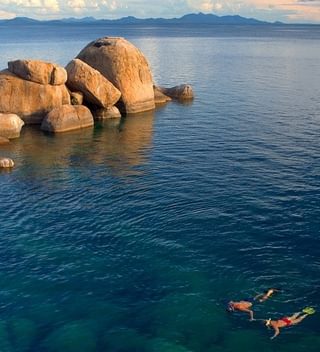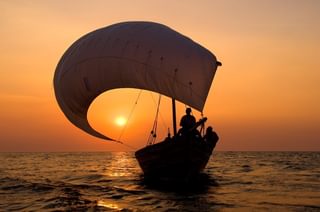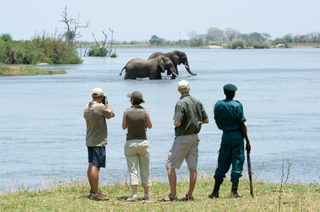Malawi Trip Inspiration
Speak to a Malawi expert today
and start planning your tailor-made holiday

Alistair

Ben


Malawi is a beautiful little, landlocked country, sandwiched between Tanzania, Zambia and Mozambique and overshadowed by several better-known tourist destinations in the region. But, the saying “Good things come in small packages” is very true of Malawi, which is bursting with highlights that those lucky enough to unwrap it will discover. Ali, our Malawi specialist shares his reasons that a Malawi holiday should be top of your bucket list.
One of Malawi’s main drawcards is that most people will have no idea of the country’s many highlights, which make it such an exciting destination to visit. It’s an off the beaten path, hidden gem! This means you won’t be sharing your African adventure with crowds of other tourists or sitting in wildlife sightings surrounded by vehicles. The country retains its cultural authenticity and if you enjoy discovering unique destinations, you’ll love Malawi.

Visitors are blown away by how beautifully green Malawi is and the hugely varied landscape. Malawi is a long, narrow country, about 520 miles north to south, and the diversity of the scenery as you traverse it is remarkable. You journey from the rolling grassland hills of the Nyika Plateau, along beautiful stretches of golden sand beaches that line the lake, past densely wooded reserves like Nkhotakota, stop off at idyllic islands in crystal clear waters, along dramatic rift valley escarpments, through picturesque tea estates and on to the majestic Mount Mulanje, which overlooks them.

They say the people make the place. In Malawi’s case, very much so. The feeling wherever you are in Malawi tends to be very friendly and hospitable. Having been to Malawi about a dozen times I have never felt anything other than welcome. From bartering and bantering with wood carvers for a famous ‘Malawi Chair’ to immersing myself in the market at Mzuzu there is always lots of smiley chat and a good repartee. Lending itself to the affectionately given name ‘The Warm Heart of Africa’. Grab a chance and interact with the locals to learn about their rich culture, they are always very keen to chat, smiling incessantly. The people you meet will bring a smile to your face. It must be infectious!

Ten major ethnic groups are historically associated with modern Malawi, with English widely spoken as well as other Bantu languages. The population is growing at quite a rate, with the birth rate being one of the highest in sub-sahara, although life expectancy is short, primarily due to the incidence of HIV/AIDS. Just over half of all Malawians are under the age of 15 and at least ¾ are under 30. The country is one of the most densely populated in southern Africa but also one of the least urbanized, however this is changing much quicker than in most other African countries. The largest cities being Lilongwe, the Capital and Blantyre.
About a fifth of Malawi’s total area is comprised of Lake Malawi, Africa’s third largest lake. It’s described as the Lake of Stars, due to the sparkling waters by day and the twinkling of hundreds of lights from fishermen on their dugout canoes, lining the horizon, by night.
The lake has long been one of Malawi’s better-known attractions, often included as a few nights’ beach stay at the end of a trip in neighbouring countries, and for good reason. A natural aquarium, boasting the greatest diversity of freshwater fish species of any lake in the world, the colourful cichlid fish provide exceptional snorkelling and scuba diving. There is also an abundance of other activities on offer, including kayaking, sailing, kitesurfing and waterskiing. Of course, you may prefer to simply relax on the idyllic golden beaches that line the shores, basking in the tranquillity.
Did you know? Lake Malawi is a meromictic lake, meaning that its water layers do not mix. The permanent stratification of Lake Malawi's water and the oxic-anoxic boundary (relating to oxygen in the water) are maintained by moderately small chemical and thermal gradients.



Have a look at Pumulani Lodge for an amazing experience on the beach at Lake Malawi. Only ten luxury villas set above the private beach with glorious views out over the lake. There is so much to do here from Dhow Cruises, cycling, amazing walking, kayaking and SUP. Alternatively head to Kaya Mawa or Blue Zebra on various islands dotted around the lake.
Its compact size, peaceful people and reasonable standard of roads make Malawi safe and easy to travel around; whether that be on a privately guided or self-drive holiday to Malawi.
Distances are not vast, allowing one to travel between the two experiences in as little as 3 hours from say from Liwonde National Park to Lake Malawi. The beauty of this is that you can self-drive comfortably throughout, the roads are good, or relax and enjoy comfortable road transfers without the requirement of expensive and environmentally unfriendly light aircraft.

For years Malawi was all about the Lake. Foreign visitors would, and many still do, look elsewhere for a game experience such as the game-rich South Luangwa just across the border in neighbouring Zambia. They would then visit Malawi as their post-safari chill-out / beach time. These days things can be very different, depending on what your priorities are. Whilst Malawi still cannot boast the density of game as its more famous safari offering neighbours, it is a far cry from the empty National Parks and Reserves of the 80’s and 90’s. Its Parks have been rebirthed with the reintroduction of several animal species including rhino, cheetah, leopard, lion, wild dog, giraffe and so much more.
Malawi has the most amazing conservation success stories to be told with Majete Wildlife Reserve and Liwonde National Park standing out as 2 key areas. Majete was the first wildlife reserve that came under African Parks management in 2003 and in collaboration with the government has resuscitated to Big 5 status. Liwonde is a more recent success story coming under African Parks Management in 2015. The Mangochi Forest Reserve is also now under management too – a stunning forested area, home to a good proportion of Malawi’s elephants.

Majete Wildlife Reserve highlights:
Nearly 5,000 animals of 16 species have been reintroduced including black rhino, elephant, lion, leopard, cheetah, sable antelope, and buffalo. The restocking of the park has led to Majete becoming a 'Big Five' reserve.
Elephant population has grown to over 430 individuals since 2006 resulting in the ability to translocate 200 individuals from Majete to Nkhotakota to help repopulate that reserve as part of African Parks historic ‘500 Elephants’ translocation.
Significant decline in the number of poaching incidents in the reserve year after year, with not one rhino or elephant poached since 2003 and 2006 respectively.

Liwonde National Park highlights:
Liwonde’s predators are on the rise, seven cheetahs were reintroduced to the park in 2017 after a 100-year absence and the population has already more than doubled. Ten 10 lions were reintroduced in 2018 after they were last seen in the park 10 years ago.
In 2019, Liwonde hosted yet another historical translocation as 17 black rhinos were relocated from South Africa to the park to boost the population numbers and genetics.
Poaching has been brought under control and more than 40,000 wire snares have been removed. A ranger training centre has been constructed providing a critically needed training ground for rangers in Malawi and on the continent.
The lure of Majete and Liwonde is the lack of other safari goers and the diversity of ways in which you can game view. You can literally still have the parks to yourselves; walking in the morning, boating in the afternoon and driving the following day. All without possibly spotting another vehicle. It also has some fantastic camps and lodges:
Kuthengo Camp in Liwonde offers a magnificent setting on a plain with its 4 large tented rooms looking out towards the Shire River. It welcomes all ages and is open all year apart from January and February. Option to walk, drive or boat and is a birder’s paradise.
Mkulumadzi Lodge (if you can spell it!) in Majete Reserve is also set on the magnificent Shire River and is slightly larger with 8 chalet style rooms. The absolute must is a night in the Star Bed, where you have nothing but the most amazing African sky above. Walk, drive, boat or sit in a hide there is plenty to keep you busy whilst you enjoy the wilderness.


Rewind a few years and Malawi would have been considered primarily a backpacker’s destination for the adventurous traveller. Apart from a handful of more luxurious beach lodges, most accommodation options were comfortable, but affordable. This has changed, as pioneering individuals, passionate about Malawi, and specialist tour operators have opened new accommodation across the country, catering for a range of budgets. There is a far greater choice of mid-range and luxury accommodation now, which is ideal for Malawi family holidays or romantic breaks. The bonus is that you will also pay less in Malawi than you would for the same standard of accommodation, service and experience in a more well-known destination.

Like the variety of activities on offer at the lake, there is a wide choice on dry land too. Wildlife safaris can be enjoyed on foot, mountain bike, boat, or canoe, as well as the more traditional 4x4 game drives. Malawi’s plateaus, mountains, forests and rolling grasslands also present idyllic opportunities for walking, trekking, mountain biking, or horse riding, serving up spectacular views. It’s definitely worth escaping the bubble of your vehicle to explore the network of meandering trails, navigating your way through little villages and discovering day to day life in Malawi.

It’s true Malawi has something to offer everyone. It is also reputed to be home to the oldest tea-growing region in Africa. The Thyolo region’s picturesque scenery is dominated by vast expanses of neatly trimmed tea bushes, with the backdrop of Mount Mulanje and views over the Lower Shire Valley.
A stay at one of the tea estates, the best known being Satemwa, provides a fascinating insight into the tea growing and production process, tea tastings, delicious afternoon teas and scenic walks through the grounds.

Malawi has a few great national parks and each offers something special in terms of its wildlife, birdlife and scenery, which means visitors will have their own personal favourites. However, Liwonde National Park is Malawi’s most visited and perhaps premier protected area. Enjoying a boat safari along the Shire River, with an abundance of hippos, crocodiles and birdlife, watching out for elephants and a variety of other land mammals on its wide floodplains, is a unique and wonderful experience. Game drives and walking are also offered in Liwonde, creating a varied and exciting safari. Wildlife species that you may be lucky enough to spot here include buffalo, sable, hyena and black rhino and recent reintroductions to the park include cheetah and lion.


The Mulanje Massif is also known as the ‘island in the sky’, rising dramatically from the surrounding plains it covers an area of 650 square miles and its highest peak, Sapitwa, reaches an impressive 3,000 metres. It offers a variety of spectacular hiking trails, suitable for most. However, the adventurous will want to explore the varied landscape of deep gorges, waterfalls, and forests, staying at the basic, but charming mountain huts, en route to the summit – well worth it.

In the remote north of Malawi lies Nyika National Park. It may be a bit of a journey to get to, but it rewards those that do venture there with one of the most distinctive safari experiences in Africa. The scenery is more reminiscent of the Yorkshire Dales than the typical African bushveld or savannah, with its rolling grassland hills. However, these hillsides are dotted with wildlife, such as roan, eland, zebra and a variety of other antelope species. It’s also a great place to spot leopard.
Malawi’s largest park, at 3,200 square kilometres and with altitudes in excess of 2500 metres, Nyika is rich in birdlife and flora. About 400 bird species are found here, including some specials, such as the endemic red-winged francolins and rare Denham’s bustard, augur buzzard and wattled crane. Exploring the high-altitude plateau of Nyika, with its breath-taking views, on a 4x4, walking, or mountain bike safari is a truly exceptional and very memorable experience.

Malawi is one of the 10 highest ranked African countries on the Global Peace Index (GPI) with a score the same as France. Under the 'Peace and Security' measure, it is the third safest country in Africa with a higher ranking than the United States.
These are just a few of Malawi’s highlights, which combine to make it an unparalleled destination for most visitors; from honeymooners or couples looking for romance, to families with children, seeking a unique and safe destination off the usual beaten trail. It’s what keeps drawing me and so many others back time and time again.
Wondering when to visit? Take a look at this guide on the best time to visit Malawi.
Looking for some more inspiration? Take a look at our best safari holidays ideas, our favourite family safaris, our big five safari guide or our top African safari honeymoon suggestions.
Start planning your tailor-made Malawi safari – call us on 0203 111 1315 and speak with a Malawi travel expert.
and start planning your tailor-made holiday


